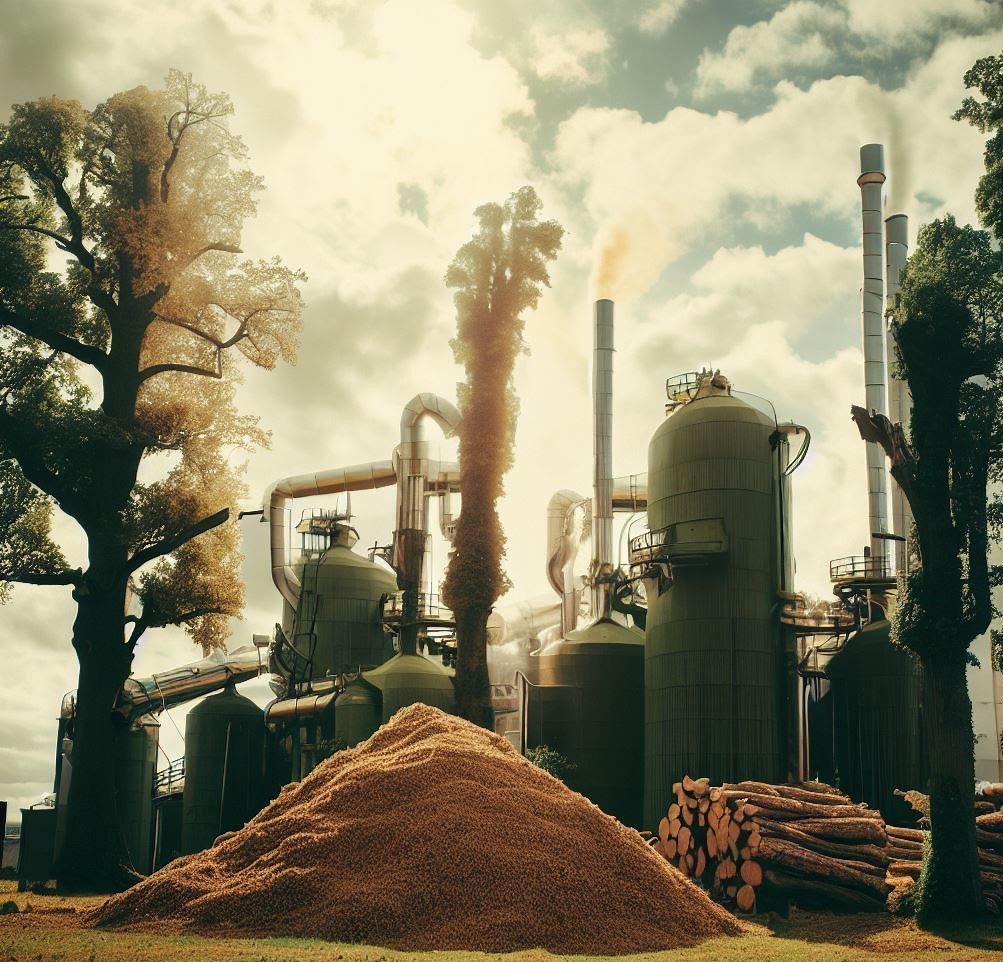
Agriculture plays a pivotal role in feeding the world’s growing population, but it also faces the challenges of climate change, resource depletion, and environmental degradation. To address these issues, the farming sector is increasingly turning towards sustainable and resilient practices, with biomass emerging as a key solution. Biomass in agriculture refers to the organic materials derived from crop residues, animal waste, and dedicated energy crops, which are transformed into renewable energy, biofuels, and valuable by-products.
The Role of Biomass in Sustainable Agriculture
The integration of biomass practices in agriculture fosters a circular economy by repurposing organic waste and residues, reducing reliance on non-renewable resources. Crop residues and agricultural by-products, which were traditionally discarded or burned, are now utilized as valuable biomass feedstocks. This conserves water, reduces land degradation, and mitigates soil erosion by maintaining organic matter and nutrient-rich soil. Furthermore, the recycling of biomass in agricultural practices minimizes the need for chemical fertilizers, thereby reducing the risk of nutrient run-off and water pollution.
Biomass practices, such as cover cropping and no-till farming, promote soil health and fertility. Cover crops, like legumes, fix nitrogen in the soil, reducing the need for synthetic nitrogen fertilizers and enhancing overall soil quality. No-till farming helps retain soil structure and moisture, reducing erosion and preserving soil health.
Biomass cultivation and utilization play a crucial role in sequestering carbon dioxide from the atmosphere. During photosynthesis, plants absorb carbon dioxide to produce biomass, which can then be used for energy or other purposes. When biomass is converted into bioenergy or biofuels, it releases carbon dioxide, but this is offset by the carbon uptake during the growth of new biomass. As a result, the net carbon emissions from biomass energy are near-zero, making it an eco-friendly alternative to fossil fuels. This carbon-neutral cycle contributes to global efforts to combat climate change and limit greenhouse gas emissions.
Furthermore, the carbon sequestration potential of dedicated energy crops, such as switchgrass and miscanthus, is significant. These crops have deep root systems that enhance soil carbon storage and contribute to carbon sequestration, making them valuable tools for carbon offsetting.
Enhancing Resilience in Agriculture with Biomass
The integration of biomass practices in agriculture offers farmers the opportunity to diversify their income streams. By producing biomass feedstocks or participating in bioenergy value chains, farmers can supplement their traditional crop revenues. Biomass-based industries offer opportunities for income stability, especially in regions vulnerable to fluctuations in crop yields due to climate variability. This diversification not only strengthens the economic resilience of farming communities but also reduces their dependency on a single source of income.
For example, farmers can establish dedicated energy crop plantations on marginal lands or as buffer zones around conventional croplands. These energy crops, like switchgrass or willow, can be harvested annually and processed into biomass feedstocks for bioenergy production. The sale of biomass can generate additional income for farmers, creating a buffer against income fluctuations caused by unpredictable weather patterns or market conditions.
The deployment of biomass energy systems on farms can provide a stable and renewable energy source for various operations. Biomass power generation through anaerobic digestion or combustion provides electricity and heat for farm equipment, buildings, and processing facilities. As an on-site energy solution, biomass-based power generation enhances the energy security of farming operations, insulating them from fluctuations in energy prices and grid disruptions.
Anaerobic digestion systems are particularly beneficial for livestock farms, as they can convert animal waste into biogas and nutrient-rich digestate. The biogas can be used to produce electricity and heat, while the digestate can be used as organic fertilizer, closing the nutrient cycle and reducing the need for synthetic fertilizers.
Biomass-Based Biofuels and Sustainable Mobility
Biomass offers a diverse range of biofuels, including biodiesel, bioethanol, and biogas. These biofuels can replace conventional fossil fuels, reducing greenhouse gas emissions and air pollutants associated with transportation. Advances in biofuel production technologies have made them more efficient and cost-effective, opening new avenues for sustainable mobility solutions. For instance, biodiesel derived from waste cooking oil or animal fats provides a renewable alternative for diesel-powered vehicles, while bioethanol from dedicated energy crops can be blended with gasoline for more eco-friendly transportation options.
Furthermore, advancements in lignocellulosic biofuel production have unlocked the potential of agricultural residues and energy crops for bioenergy production. Lignocellulosic biomass, which includes agricultural residues like corn stover and wheat straw, can be converted into biofuels through biochemical or thermochemical processes. These advanced biofuels offer higher carbon savings and reduced competition with food crops compared to first-generation biofuels.
The adoption of biomass-based biofuels promotes energy independence for countries heavily reliant on fuel imports. By developing domestic biofuel industries, nations can reduce their dependence on fossil fuel imports, enhancing energy security and reducing foreign exchange expenditures. Furthermore, biofuels offer an opportunity for countries to meet their renewable energy targets and comply with international agreements on climate change mitigation.
In addition to biofuels for transportation, biomass-based energy systems can power decentralized and off-grid communities. In rural areas where access to electricity and clean cooking fuels is limited, biomass gasification and micro-scale biogas plants can provide reliable and sustainable energy solutions.
Challenges and Barriers to Biomass Integration
The widespread adoption of biomass practices in agriculture requires significant investments in technology and infrastructure. The establishment of biomass supply chains, processing facilities, and power generation plants demands specialized expertise and financial support. Additionally, the transportation and storage of bulky biomass materials present logistical challenges that must be addressed for efficient operations.
To overcome these challenges, governments and stakeholders must invest in research and development to improve biomass conversion technologies and enhance the efficiency of biomass supply chains. Public-private partnerships can help foster innovation and drive technological advancements in the biomass sector.
Clear and supportive policy frameworks are crucial to fostering the growth of biomass in agriculture. Governments need to incentivize farmers and industries to adopt biomass practices through financial incentives, tax breaks, and feed-in tariffs for renewable energy production. Furthermore, regulatory measures should be in place to ensure sustainable biomass production, prevent land use conflicts, and safeguard environmental and social interests.
Policy frameworks should also prioritize the sustainable use of biomass resources, ensuring that the production and utilization of biomass do not negatively impact food security, biodiversity, or land use. Encouraging the use of residues and waste streams for biomass production can minimize competition with food crops and reduce the environmental footprint of biomass-based industries.

